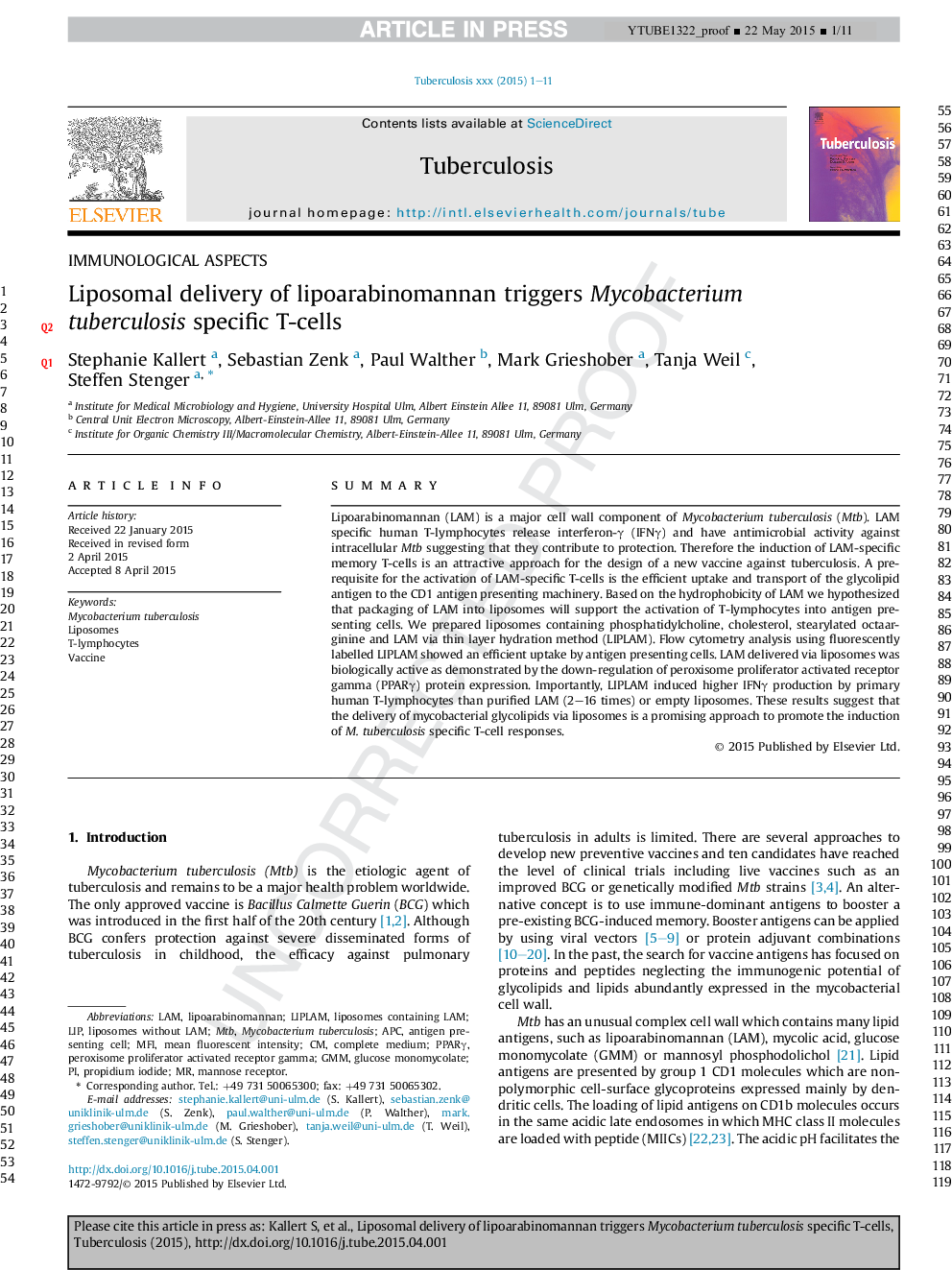| Article ID | Journal | Published Year | Pages | File Type |
|---|---|---|---|---|
| 10962026 | Tuberculosis | 2015 | 11 Pages |
Abstract
Lipoarabinomannan (LAM) is a major cell wall component of Mycobacterium tuberculosis (Mtb). LAM specific human T-lymphocytes release interferon-γ (IFNγ) and have antimicrobial activity against intracellular Mtb suggesting that they contribute to protection. Therefore the induction of LAM-specific memory T-cells is an attractive approach for the design of a new vaccine against tuberculosis. A prerequisite for the activation of LAM-specific T-cells is the efficient uptake and transport of the glycolipid antigen to the CD1 antigen presenting machinery. Based on the hydrophobicity of LAM we hypothesized that packaging of LAM into liposomes will support the activation of T-lymphocytes. We prepared liposomes containing phosphatidylcholine, cholesterol, stearylated octaarginine and LAM via thin layer hydration method (LIPLAM). Flow cytometry analysis using fluorescently labelled LIPLAM showed an efficient uptake by antigen presenting cells. LAM delivered via liposomes was biologically active as demonstrated by the down-regulation of peroxisome proliferator activated receptor gamma (PPARγ) protein expression. Importantly, LIPLAM induced higher IFNγ production by primary human T-lymphocytes than purified LAM (2-16 times) or empty liposomes. These results suggest that the delivery of mycobacterial glycolipids via liposomes is a promising approach to promote the induction of M. tuberculosis specific T-cell responses.
Keywords
Related Topics
Life Sciences
Immunology and Microbiology
Applied Microbiology and Biotechnology
Authors
Stephanie Kallert, Sebastian F. Zenk, Paul Walther, Mark Grieshober, Tanja Weil, Steffen Stenger,
